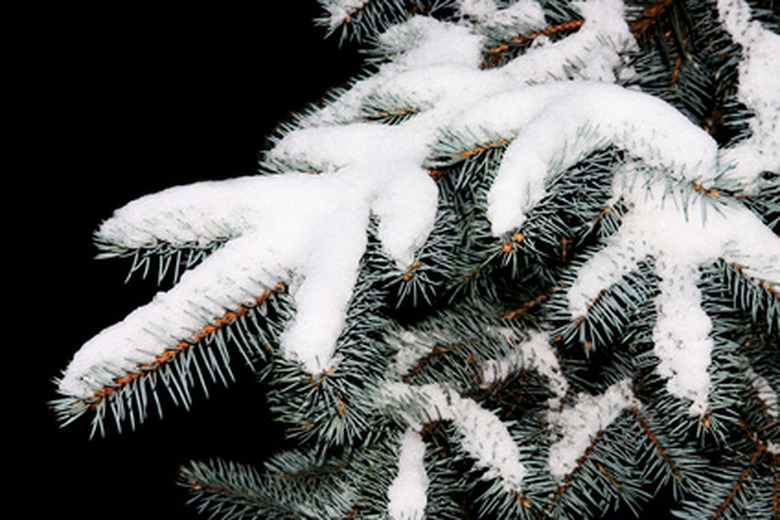Black Hills Spruce Facts
The Black Hills spruce tree (Picea glauca var. densata) grows naturally in the Black Hills area of South Dakota and is a variation of a white spruce. The tree grows to a height of 95 feet with a large canopy spread of about 42 feet. Numerous experts believe it does not differ enough from the white spruce to have a classification, according to the Missouri Botanic Garden.
Planting Location
The Black Hills spruce tree reacts best to well-drained soil conditions with moist soil. Once established, the tree will tolerate moderate drought conditions for a short time. The tree requires abundant organic matter. A soil pH between 4.0 to 7.5. is ideal. The tree grows best in full sunlight but will tolerate partial shade.
- The Black Hills spruce tree (Picea glauca var.
- The Black Hills spruce tree reacts best to well-drained soil conditions with moist soil.
Temperature
The tree grows best in cool climates. It enjoys cold winters and cool summers. The tree grows well at 6,000 feet elevation. Black Hills Spruce trees are grown in zones 2 to 6. The root system is shallow, and dries out easily in a hot climate.
Appearance
Black Hills spruce trees grow in large, conical shapes. The dark, green needles grow to 1 1/4-inch in length. Each needle is attached to the stems individually. The tree is both male and female. The bark of an adult tree appears a medium brown and easily flakes off to reveal shades of gray.
- The tree grows best in cool climates.
- The tree grows well at 6,000 feet elevation.
Flowers and Cones
The tree's female strobili appear a greenish color that fades to purple and the male strobili first appear a light tan but gradually change to red. Brown, 2-inch cones appear on the tree and point downward. The seeds are tan and have a small, winged appearance.
Diseases and Insects
The Black Hills spruce tree suffers from no serious diseases or insects. Spider mites often occur but are easily washed away using a powerful spray of water. Rust, cankers, stem and root rot often occur but are easily prevented through proper planting or treated.
